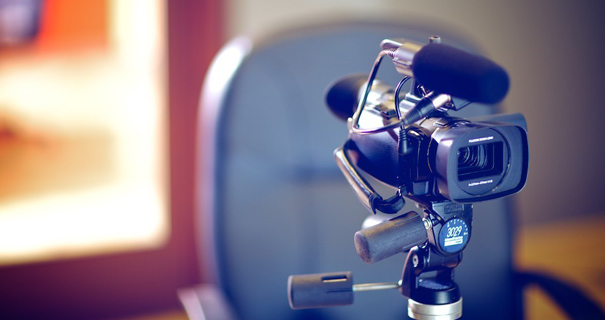Why Strong Trial Presentations Are Secret to Lawful Success
The significance of strong trial discussions can not be overemphasized in the world of lawful practice. These presentations act as the main lorry for conveying arguments and evidence, essentially forming juror assumptions and influencing their decision-making processes. A well-crafted story, boosted by critical aesthetic aids and emotional interaction, cultivates a profound connection with jurors, ultimately impacting their understanding of the instance. However, the subtleties of properly adapting these discussions to varied juror histories introduce complexities that merit further expedition, specifically in the context of achieving beneficial results in tests.
Importance of Reliable Interaction
Exactly how can effective communication form the end result of a legal test? Efficient communication is extremely important in a legal setup, as it functions as the conduit where disagreements, evidence, and lawful principles are shared to judges and courts. Clear articulation of realities and legal criteria permits a convincing presentation that can dramatically influence the decision-making procedure. In the courtroom, the capability to existing complex details in an obtainable manner is essential, as jury participants may not have a lawful history.
Moreover, effective interaction cultivates rapport and count on in between attorneys and their clients, improving cooperation and making sure that all events are straightened in their objectives. It likewise plays an essential duty in court selection and interaction, where the capacity to get in touch with jurors can influence their receptiveness to the case. In addition, non-verbal interaction, such as body language and eye contact, contributes to the general impact an attorney makes, reinforcing verbal messages.
Eventually, mastering efficient interaction can cause an extra engaging and meaningful discussion, raising the probability of a favorable decision. Therefore, lawyers need to prioritize honing their interaction abilities as a keystone of their test prep work and method.

Crafting an Engaging Narrative
Efficient communication prepares for crafting an engaging narrative in lawful tests. A well-structured narrative not just engages the court but also makes clear complicated legal issues. The objective is to offer the facts in a method that reverberates psychologically and practically with the audience, allowing them to recognize the case from the client's perspective.
To accomplish this, attorneys need to identify the central style or message of the situation, which works as the backbone of the story. Each item of proof and witness testament ought to be woven into this style, strengthening it as opposed to interfering with it. This produces a cohesive story that is simple for the court to adhere to.
Additionally, using relatable personalities-- be it the plaintiff, accused, or key witnesses-- can humanize the instance, making it more unforgettable. Attorneys have to likewise take into consideration the pacing of their story, making certain that vital minutes are highlighted which the story unravels in a logical progression.
Ultimately, a compelling narrative changes the discussion of truths into an influential debate, guiding the jury toward a positive final thought while making certain that the complexities of the additional hints lawful system remain obtainable and understandable.
Making Use Of Visual Help
Aesthetic help play a critical role in enhancing the understanding and retention of info during lawful trials. By presenting complicated data and debates visually, attorneys can streamline detailed details, making them extra available to jurors. Charts, charts, and images can effectively show essential points, enabling jurors to comprehend essential realities quickly.
Using aesthetic aids not only help in clarity yet also engages the target market's attention. Jurors are most likely to keep in mind information provided aesthetically than through verbal descriptions alone. Showing timelines via visual representations can clear up the series of occasions, helping jurors recognize the context of the case.
Additionally, aesthetic aids can help to highlight variations in proof, making them more pronounced. When utilized purposefully, they can underscore the stamina of the debate or expose weaknesses in the opposite side's find here instance. trial presentations. Making use of modern technology, such as interactive presentations or animations, can even more improve involvement and understanding
Involving the Jury Emotionally
Often, successful test presentations require greater than just sensible debates and factual proof; they must also reverberate on a psychological degree with jurors. Engaging the court mentally can substantially influence their understanding of the instance and their utmost judgment. By crafting a narrative that humanizes the parties involved, attorneys can produce an emotional link that motivates jurors to feel sorry for the clients' experiences.
To attain this, attorneys should focus on storytelling methods that highlight the personal risks and real-life ramifications of the case. This might include sharing touching anecdotes or using powerful visuals that evoke sensations of compassion, anger, or sadness. Such elements can assist jurors see past the lawful complexities and recognize the human dimensions of the situation.
In addition, the usage of tone, body language, and eye contact throughout the presentation can further boost emotional engagement. Hence, psychological interaction is an essential component of a compelling test discussion.
Adapting to Target Market Expectations
Recognizing the assumptions of the jury is vital for a successful test presentation. Jurors included presumptions influenced by individual experiences and societal stories, which can substantially impact their decision-making. Customizing your presentation to align with these expectations can enhance your persuasive power.

Furthermore, developing reputation is paramount. Jurors anticipate lawyers to present evidence and debates that are not just engaging yet also morally appear - trial presentations. This consists of being transparent about the toughness and weaknesses of your instance, which promotes trust and respect
Finally, anticipate jurors' inquiries and issues. Dealing with prospective questions proactively demonstrates an understanding of their viewpoint and a commitment to quality. By adapting your discussion to meet audience assumptions, you produce a more compelling narrative, ultimately improving the possibilities of a positive decision.

Verdict
Finally, strong test presentations are vital to attaining lawful success. Reliable interaction, an engaging narrative, calculated use visual help, emotional interaction with the court, and adaptation to target market expectations collectively improve juror understanding and retention of crucial info. These components not only establish the reputation of today party but additionally significantly influence juror understandings and decision-making. Mastering the art of test presentation is important for legal experts aiming to secure desirable end results.